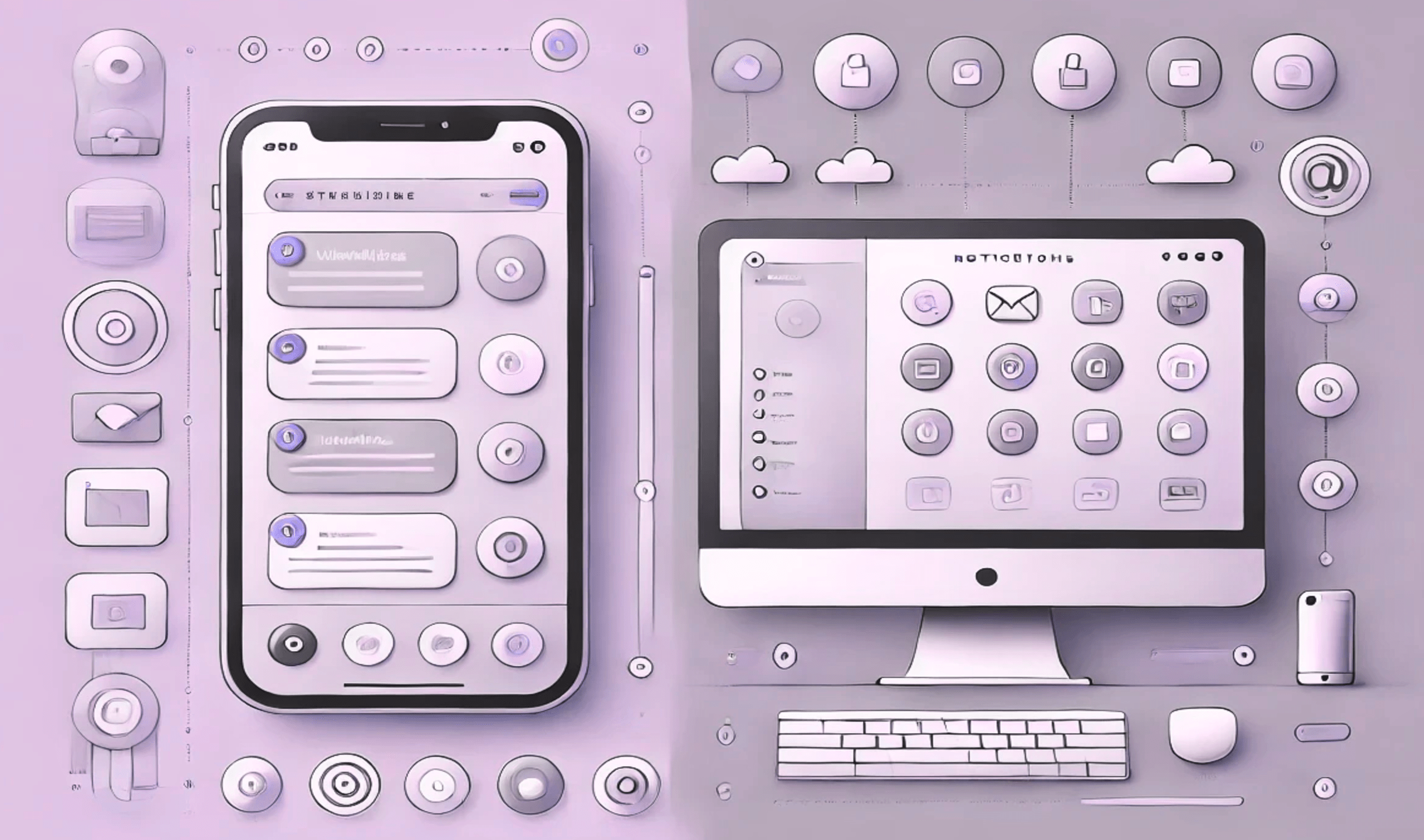Mobile vs. Desktop Marketing: How to Tailor Your Messages for Maximum User Engagement

As users increasingly access the internet via both mobile and desktop devices, marketers face a critical challenge: how to effectively tailor messaging for each platform. Understanding the behavioral differences between mobile and desktop users is essential for creating marketing strategies that maximize engagement, conversions, and overall success.
In this article, we’ll explore the key differences in mobile and desktop usage and provide insights on how to adapt your marketing approach to each platform.
*Mobile users prioritize quick, concise content for immediate needs, while desktop users spend longer periods exploring content.
*Mobile marketing requires simplified, visually appealing messaging, while desktop marketing can incorporate more detailed layouts, complex visuals, and in-depth product information.
*Mobile drives higher engagement but shorter sessions, while desktop users are more likely to spend time on longer, informative content, making it ideal for deeper engagement and conversions.
User Behavior Differences
Mobile and desktop users exhibit distinct behaviors that marketers need to account for in their strategies. Mobile users typically engage with content in shorter, more frequent bursts, often while on the go. These users prioritize quick access to information and are often looking for immediate solutions, such as finding a nearby store or making a quick purchase. On the other hand, desktop users tend to spend longer periods on websites, performing in-depth research, comparing products, and consuming more detailed content.
Due to these behavioral differences, marketers must adapt their content accordingly. On mobile, concise, impactful messaging that immediately captures attention is crucial, as mobile users are less likely to read long-form content. In contrast, desktop users require more detailed information, interactive elements, and complex product comparisons, catering to users who are ready to spend more time on research and decision-making.
Screen Size and Content Presentation
The size of the screen plays a major role in how content is consumed. Mobile screens are smaller, requiring marketers to simplify their messaging and use visually appealing elements that don't overwhelm the user. Key calls to action (CTAs) should be prominent, with minimal distractions to guide users toward conversions quickly. For instance, buttons such as "Buy Now" or "Learn More" should be easy to find and click, as mobile users expect seamless navigation and quick results.
In contrast, desktop screens provide more space for detailed visuals, complex layouts, and multiple CTAs. Desktop marketing can make use of larger banners, in-depth product descriptions, and comparison charts, allowing users to explore more options at their own pace. This is particularly useful for industries like e-commerce and B2B services, where users may want to browse through several product features before making a decision.
Engagement and Conversion Patterns
Mobile marketing tends to drive higher engagement due to the frequency with which users check their devices. For example, mobile users may quickly respond to SMS notifications or push alerts, creating opportunities for immediate interaction and conversion. However, mobile also has higher bounce rates and lower average time on-site compared to desktop, suggesting that while users visit frequently, they may not stay long unless the content is highly relevant and engaging.
Desktop marketing, on the other hand, boasts longer session times and lower bounce rates, meaning users are more likely to stick around and explore multiple pages. For marketers, this means desktop campaigns should focus on delivering value through content depth, such as blog posts, whitepapers, and webinars. Since desktop users are more likely to engage in detailed research, providing educational and informative content can help establish trust and move users further down the funnel.
Personalization and Targeting
Both mobile and desktop offer significant opportunities for personalization, but the way it's executed varies by platform. Mobile marketing benefits from real-time targeting, such as location-based services and behavior-triggered messages. For example, marketers can send personalized push notifications to users based on their current location or recent app activity, making mobile ideal for timely and contextually relevant offers.
Desktop users, meanwhile, tend to engage more deeply with personalized content delivered via email or on-site recommendations. Personalization on the desktop can include product recommendations based on browsing history, detailed retargeting ads, or custom dashboards that adapt to the user’s preferences. Since desktop users often engage in more thoughtful research, marketers can use this opportunity to present in-depth product comparisons, case studies, and testimonials to reinforce purchase decisions.
Optimization for Different Devices
Optimizing for both mobile and desktop requires more than just responsive design—it demands a tailored approach to user experience. Mobile-first strategies should prioritize speed, simplicity, and ease of navigation. For instance, mobile checkout processes should be streamlined, with auto-filling forms and one-click payment options to reduce friction and drive conversions. Mobile pages should load quickly, as slow load times can lead to higher bounce rates and lost opportunities.
On desktops, marketers have more flexibility to incorporate complex features, such as interactive tools or multi-step forms, that can enhance user engagement without sacrificing speed. Desktop marketing also allows for more intricate A/B testing, as users are generally more patient and willing to engage with longer forms of content, such as video tutorials or interactive infographics.
Final Thoughts
Both mobile and desktop platforms offer unique opportunities for marketers to engage their audiences. The key to success lies in understanding the specific behaviors and preferences of users on each platform and tailoring your messaging accordingly. On mobile, focus on speed, simplicity, and immediacy to capture attention and drive quick actions. On the desktop, leverage detailed content, rich visuals, and personalized experiences to build deeper engagement and trust.
By adopting a hybrid approach that combines the strengths of mobile and desktop marketing, you can create more effective campaigns that resonate with your audience regardless of their device.
At FlareLane, we understand the pains of e-commerce businesses striving to grow to the next level. Our platform offers real-time analytics and personalized marketing automation features to enhance customer interaction and engagement.
Ready to take your digital marketing strategy to the next level? Click the link below to learn more!


